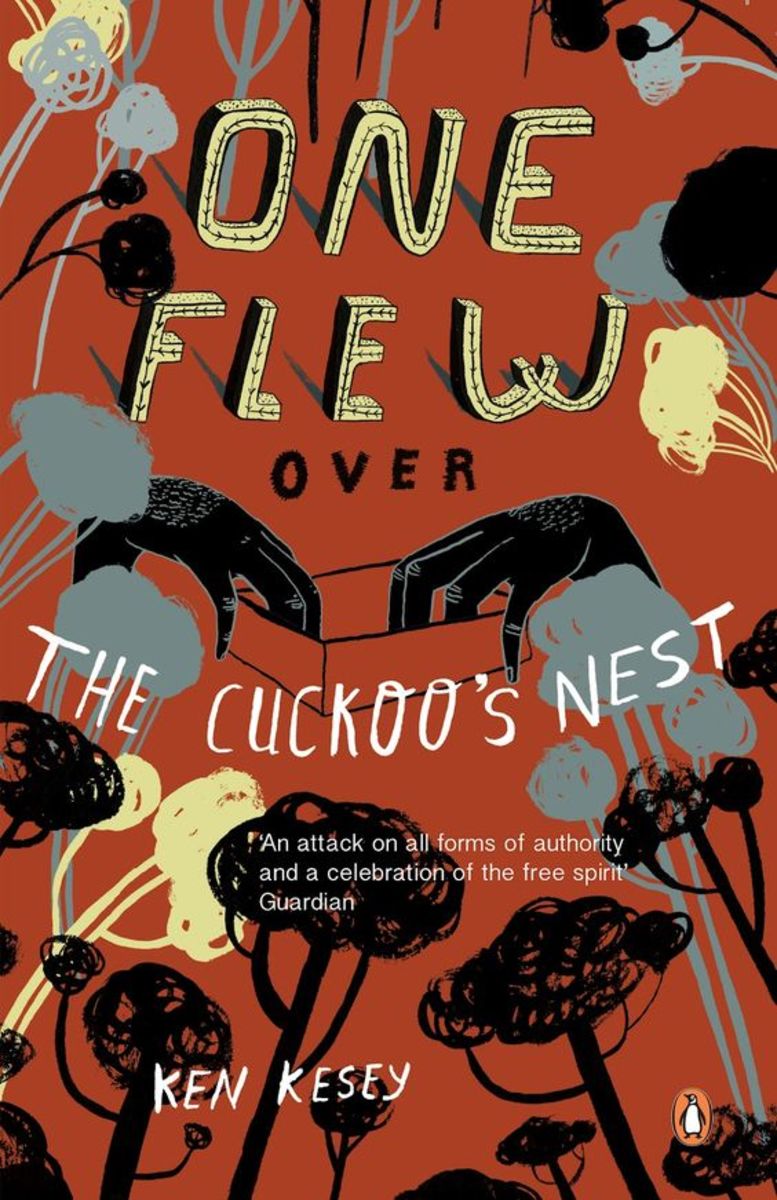In the pantheon of American literature, few novels resonate with such visceral intensity and complexity as Ken Kesey’s “One Flew Over the Cuckoo’s Nest.” Published in 1962, this seminal work transcends the conventional boundaries of narrative, probing deeper into the human psyche and societal constructs. The novel is not merely the story of its characters; it is a lens that invites readers to scrutinize the nature of sanity, control, and resistance within the labyrinth of a mental institution. Prepare to shift your perspective as we delve into a narrative intricately woven with themes that challenge our understanding of conformity and individuality.
The protagonist, Randle P. McMurphy, is a boisterous and irreverent newcomer to the mental ward, whose arrival heralds a tumultuous upheaval within the oppressive environment ruled by the formidable Nurse Ratched. Through McMurphy’s larger-than-life persona, Kesey illustrates the stark dichotomy between individuality and institutional conformity. His defiance against the established order serves as a catalyst for transformation—not only for himself but also for the other patients, who have resigned themselves to a numbing existence governed by fear and routine.
As the narrative unfolds, we are presented with an array of multifaceted characters that embody the spectrum of human experience. Chief Bromden, the novel’s narrator, offers a unique perspective shaped by paranoia and the burden of silence. His hallucinatory visions of the “Combine,” a metaphor for the oppressive forces of society, provide a rich tableau against which the story unfolds. The use of magical realism blossoms throughout Bromden’s observations, blurring the lines between reality and perception, emphasizing the novel’s exploration of mental health and individuality.
Kesey’s prose ebbs and flows like a symphonic composition, oscillating between moments of poignant introspection and raucous humor. This duality enhances the emotional landscape of the book, presenting a compelling juxtaposition that both entertains and incites reflection. From the somber reality of electroshock therapy to the exhilarating escapades of McMurphy’s rebellion, the narrative captures the exhilarating highs and devastating lows of human existence.
One of the most profound aspects of “One Flew Over the Cuckoo’s Nest” is its commentary on the mechanisms of power and control. Nurse Ratched, with her clinical precision and icy demeanor, embodies the archetype of tyrannical authority. Her methods are insidious; she wield control not through brute force but by manipulating the fear and insecurities of her patients. Kesey deftly critiques the dehumanizing aspects of institutionalization, provoking readers to question the morality of a system that prioritizes conformity over individual freedom.
Throughout the narrative, McMurphy emerges as an emblem of rebellion against this authoritarian regime. His antics serve not just to entertain but to enlighten. He challenges the status quo, wielding humor as a weapon against the oppressive silence that envelops the ward. The camaraderie that blossoms among the patients under his influence reinforces the notion that connection and solidarity are powerful antidotes to despair. In a society that often encourages isolation, McMurphy’s presence acts as a beacon of hope, illuminating the path to self-discovery and mutual support.
The symbolism embedded within “One Flew Over the Cuckoo’s Nest” further amplifies its impact. The titular cuckoo, a bird known for laying its eggs in other birds’ nests, serves as a metaphor for the transient nature of identity and belonging. Just as the cuckoo is an outsider, so too are the patients—each grappling with their own internal and external struggles. This symbolism propels the reader to examine the broader implications of societal expectations on individuality and the concept of ‘normalcy.’
Kesey’s exploration of mental health issues is both timely and timeless. In an era where discussions surrounding mental illness are increasingly candid, the novel prompts readers to consider the societal stigmas that persist. By humanizing the experiences of those labeled as “insane,” Kesey challenges us to reconsider our perceptions of sanity and insanity. Are those deemed mentally ill truly the aberrations, or is it society’s rigid structure that distorts the essence of humanity?
Furthermore, the novel’s conclusion leaves an indelible mark on readers. The culmination of events compels a reevaluation of sacrifice and the price of freedom. McMurphy’s ultimate act of defiance, albeit tragic, resonates profoundly, evoking a chorus of emotions that linger long after the pages are turned. In choosing to confront the oppressive forces within the ward, McMurphy illuminates the harsh realities of a society that often forces individuals to pay dearly for their quest for autonomy.
In summary, “One Flew Over the Cuckoo’s Nest” is not merely a tale set within the confines of a mental institution; it is a profound exploration of humanity itself. Through its rich tapestry of characters, themes, and striking symbolism, Ken Kesey invites readers to traverse the delicate boundaries of sanity, conformity, and the unquenchable thirst for freedom. As we emerge from the experience, we are left with questions that resonate far beyond the pages of the novel. How do we define sanity? In what ways do societal expectations shape our identities? And ultimately, what is the true cost of defiance? With its audacious narrative and enduring relevance, “One Flew Over the Cuckoo’s Nest” dares us to contemplate the extraordinary within the ordinary, promising a shift in perspective that is both enlightening and transformative.
